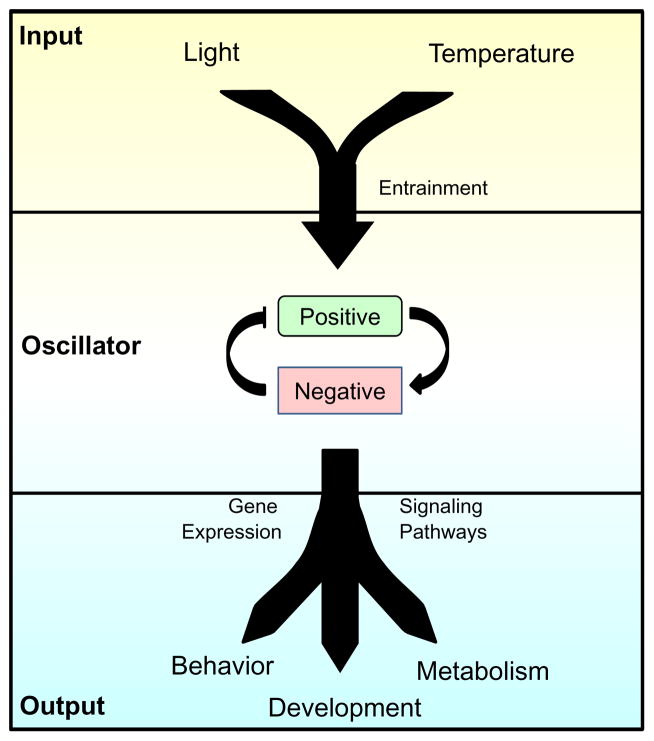Figure 1.1.
Organization of the circadian clock. The core of a circadian clock is its timekeeping molecular oscillator that cycles with a period of approximately 24 h. Input pathways detect temporal cues in the environment, such as light and temperature, and synchronize the molecular oscillator to external time through a process called entrainment. Finally, output pathways couple the molecular oscillator to the control of gene expression and signaling pathways. Rhythmic control of output pathways by the clock underlies overt circadian rhythms in behavior, metabolism, and development.

